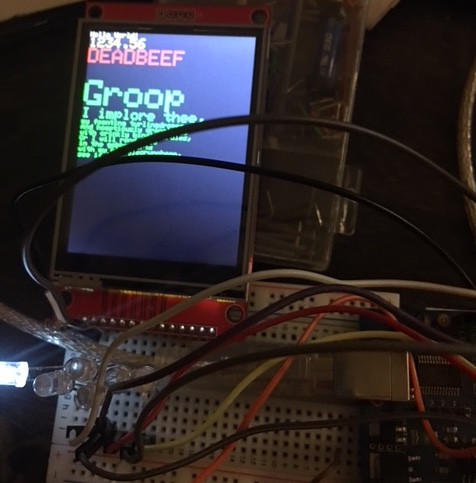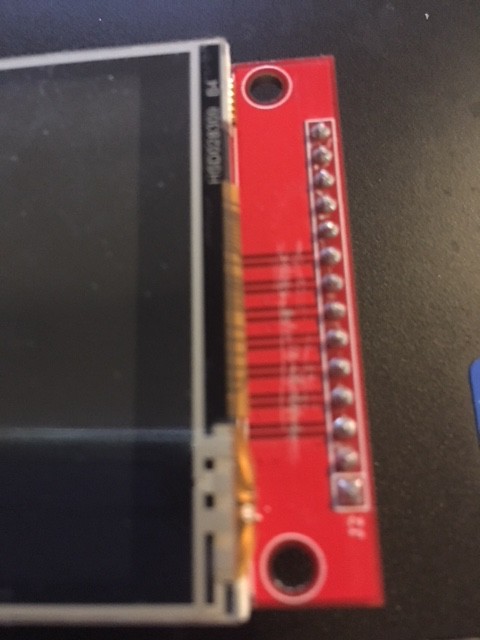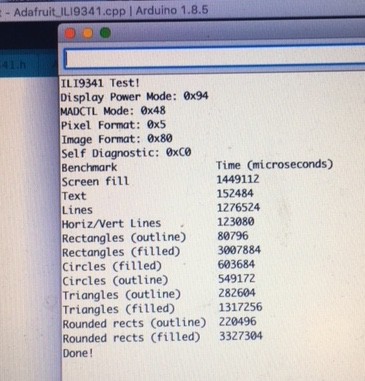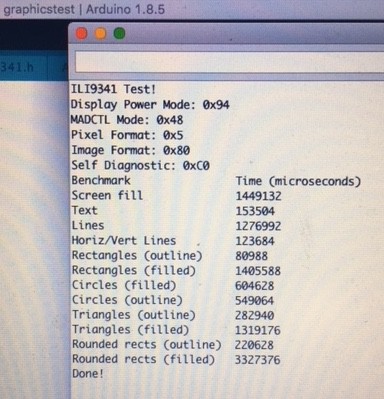here are the pinouts for my display. might be in different order on other peoples versions but should be compatible with adafruit drivers. i did a side by side compare of my spi burst vs normal driver. it is already 2x speed (even without faster i/o). keep in mind that individual pixel writes will be slower unless using rectangle mode. rectangle mode only allows for one color at a time. i have methods that allow up to 256 colors at a time! (so far writing 16x16 pixels at a time with little command overhead, with this display resolution likely 32x32 at a time with scaling x2)

i used leds as voltage drop to pins, only. cs line requires pull down resistor in this case. (this also is why that led has enough current to light)


i tested adafruits drivers performance and rectangle fills writes time was about 3,007,884 microseconds
in the bottom picture with my optimizations just for spi burst, time was half that time. look st line for rectangles. this is the only one i used spi bursting in. what my method does is send spi, then do the work while spi is in process, when work is done it is ready for next spi. normal drivers send spi, wait for spi to complete, then process shifting and loading memory.
it will be a little faster once the i/o is pin writes is optimized as well. however since spi clock rate is the limiter beyond spi bursts, the i/o pin performance will not improve it as much.


Discussions
Become a Hackaday.io Member
Create an account to leave a comment. Already have an account? Log In.